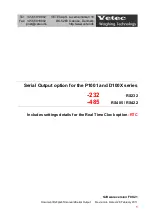
Lucent Technologies Lineage
®
2000 ECS/GPS Battery Plant J85500G-2
Issue 6 May 1999
Product Description 2 - 25
4. Press the charge button and observe that the CAP CHG
LED on the Capacitor Charge Panel lights. If the LED does
not light, the connected load may already be precharged or
the circuit breaker may not be wired to the capacitor
charge circuit.
5. The LED will dim as the precharge current diminishes.
When the LED no longer changes in intensity, turn the
associated breaker and then release the charge button.
Plant Bus Bars
The plant bus bars are mounted in three tiers on insulating
standoffs at the top of the ECS plant. These copper bus bars
(plated with a solder finish) are designed to accommodate one-
or two-hole copper crimp lug connectors in many sizes up to
350MCM. Refer to Tables 3-D and Table 3-E for details.
The middle bus bar serves as the Charge Bus for both charge and
discharge circuits. The lowermost bus bar serves as the Charge
RTN Bus, which is connected via the plant shunt to the
uppermost Discharge RTN Bus Bar. Refer to Figure 2-10.
A hinged panel covers the front of the bus bars and includes a
mounting space for a LVD/Fuse Power Board (see Figure 2-11).
The LVD/Fuse Board (CP5) provides circuitry for the LVD
sensing (see Section 2) and regulation fuses to protect the ECS
controller from overcurrent in the sense leads.
Plant Shunt
A current shunt is a sensing device which provides a millivolt
signal proportional to the current flowing through it. The
millivolt-to-ampere ratio of the shunt is the dc resistance of the
shunt (in milliohms), which is thermally stable and accurately
known.
The current shunt in the ECS Battery Plant is connected between
the Charge Return Bus and the Discharge Return Bus (see Figure
2-10). It is used to measure the total current supplied to the load
from the rectifiers and/or batteries. The shunt has a full scale
rating of 50 millivolts at the maximum plant current of 600
amperes. The shunt millivolt signal is sent, via the CP5 Fuse
Board, to the controller where it is translated back to amperes
and displayed on the digital meter.
















































